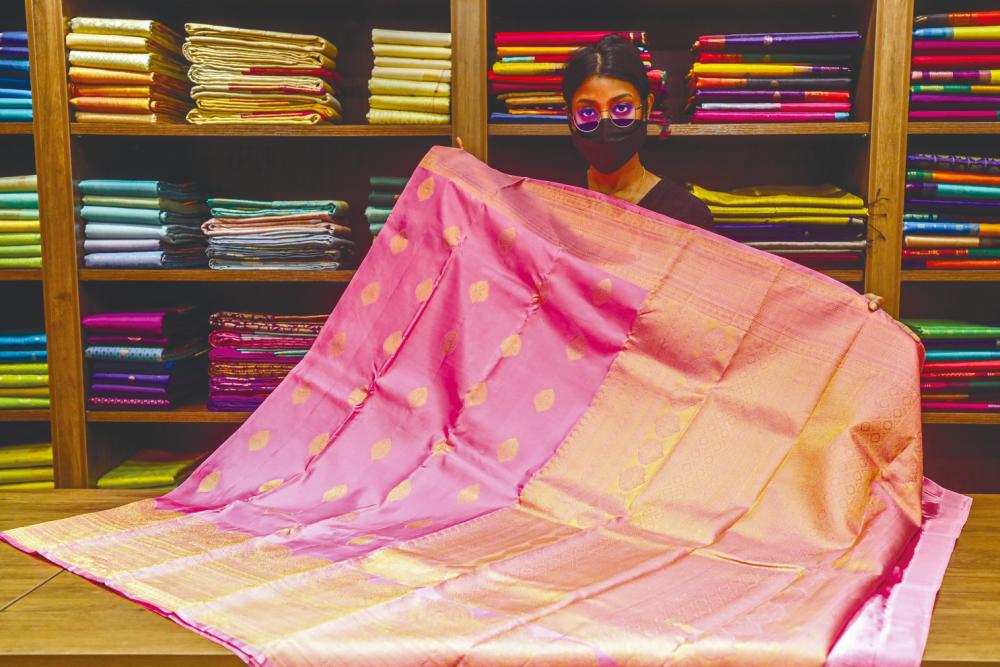SAREES have been traditionally worn by Indian women for over a century, and yet their aesthetic beauty has never failed to impress. The saree, one of the oldest attire for women, has a timeless quality.
Sarees are worn by Indian women of all ages for special occasions, and are a must-have for any South Indian wardrobe, especially for weddings.
Saree fabrics are hand-woven, called handlooms, while machine-made sarees are called power-loom sarees.
For a time, the handloom industry was facing challenges to its sustainability due to a decline in demand, among other factors.
But in the last few years, interest shown by the current generation has tremendously brought back the love for sarees, perhaps owing to the influence of social media.
Instagram and Facebook have opened up to a whole new world of sarees, featuring various types and drape styles, creating awareness and appreciation for the garment.
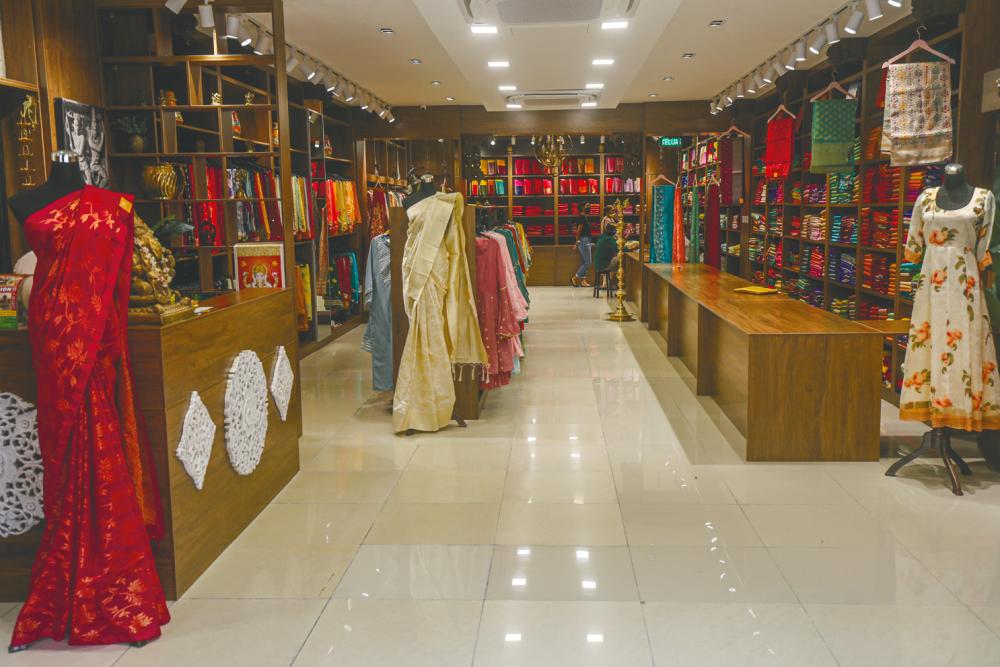
Sarees come in a wide range of fabrics like organza, chiffon, linen, silk, satin and even blended fabrics. But the most beautiful of all, hands down, are the Kanchipuram sarees.
Considered a masterpiece, a Kanchipuram saree is synonymous with stunning craftsmanship and superior quality fabric.
Its name originates from the Kanchipuram region in Tamil Nadu, where the sarees were first made.
The fabrics are hand-woven in the traditional way, with mulberry silk threads and pure gold or silver threads on the hem, or Zari, using wooden handloom tools just as it was done in olden times.
Weavers are mostly from the older generation, with refined skills in weaving methods and vast experience gained over decades.
It takes days, sometimes weeks, to produce one saree. But the resulting product would be impeccable.
Intricate in detail, soft in texture with the finest quality fabric meant to last for generations, Kanchipuram sarees are commonly handed down as a family heirloom.
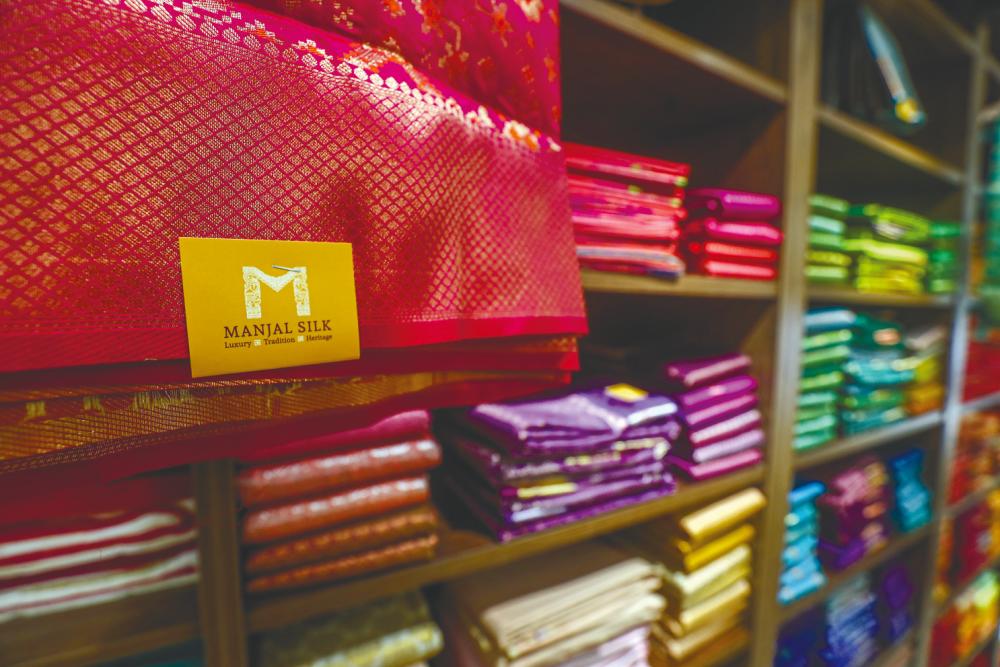
The changing colours
In the past, Kanchipuram or Kanjivaram sarees had striking colour palettes with usually contrast colours on the border or the blouse (choli), but these have changed in recent years.
Sarees have evolved over the years with the rise of fashion boutiques, creating innovative designs and patterns paired with fascinating colour shades.
In addition, designs from high-end or haute couture fashion like colour blocking and ruffles have influenced saree designs.
Despite the changing trends every year, the traditional design never fades. Most saree manufacturers have retained traditional designs as they are cherished and much-appreciated by not only the older generation but surprisingly, young women as well.
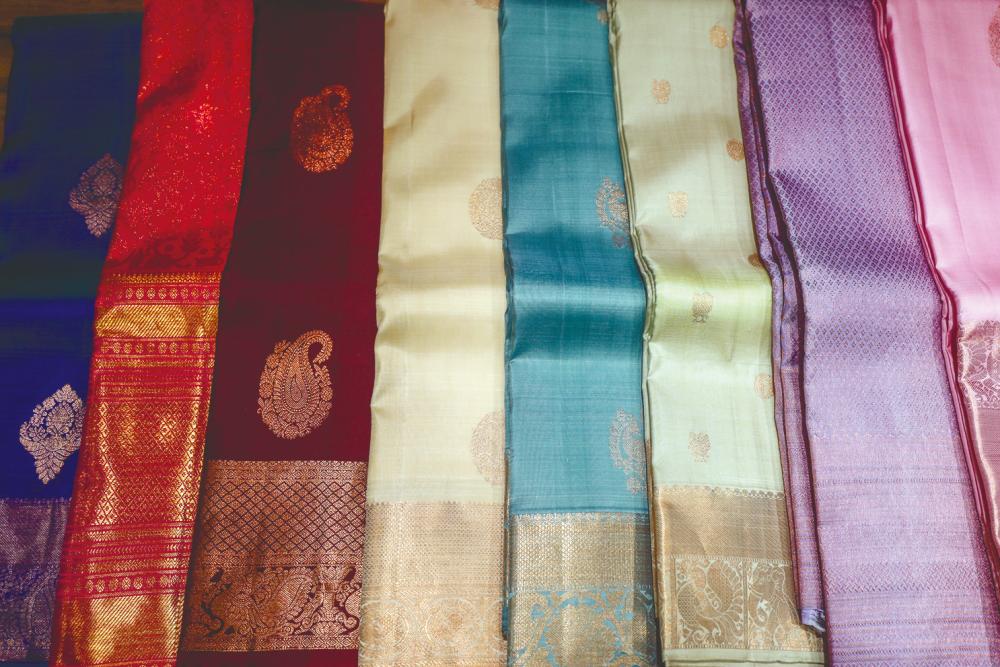
If you step into the recently opened Manjal Silk store on Jalan Yeo Guan Hup in Klang, you would see both traditional and modern designs showcased on shelves. This is because young brides are attracted to both the traditional style, as well as contemporary designs.
Approximately 80% of Manjal Silk young bride customers prefer opulent traditional design sarees over modern, contemporary designs. Traditional sarees require meticulous hand work for its complex design, and the classic Kanchipuram silk saree never goes out of style.
This is probably why young brides tend to choose choose more traditionalstyles. However, they prefer their sarees in subtle hues of pastel colours, such as pink, lavender, blue, green and gold.
About 30 to 40 years ago, most brides picked bright colours like red, which is deemed auspicious for weddings. But today’s brides prefer a saree that combines traditional design with modern colours to complement modern wedding styles and trends.
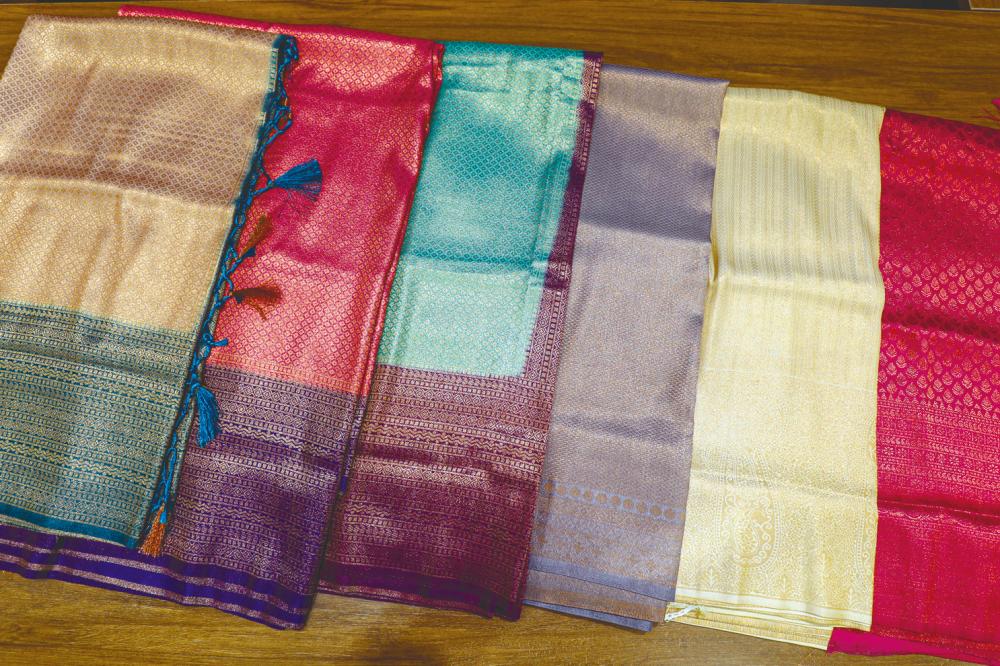
Rooted in tradition
Kanchipuram silk sarees are classified into four types, each with its own signature motif or design.
0 Plain Kanchipuram – subtle and elegant with no motifs or patterns but with a simple gold silk thread hem in contrast colours that are usually vibrant. In recent years, soft pastel-coloured sarees have been the most desired. It is suitable for formal or informal events and is timeless due to its sheer elegance and could be worn even a decade later and still look good.
0 Modern Kanchipuram silk – has innovative and creative designs and comes in a wide range of colours from gold to pastels. It is preferred by youths due to its unique contemporary design and attractive colour combinations that go well with women who prefer to stand out.
0 Floral Kanchipuram silk – has floral, paisley or geometric motifs.
0 Temple Kanchipuram silk – has an intricate design with details, is weaved with pure silk and gold thread hems and although it takes days to weave one, the results are absolutely stunning. Elegant traditional Kanchipuram silk sarees are perfect for brides for weddings and temple or house puja (prayers), and are usually conisdered a prized possession.
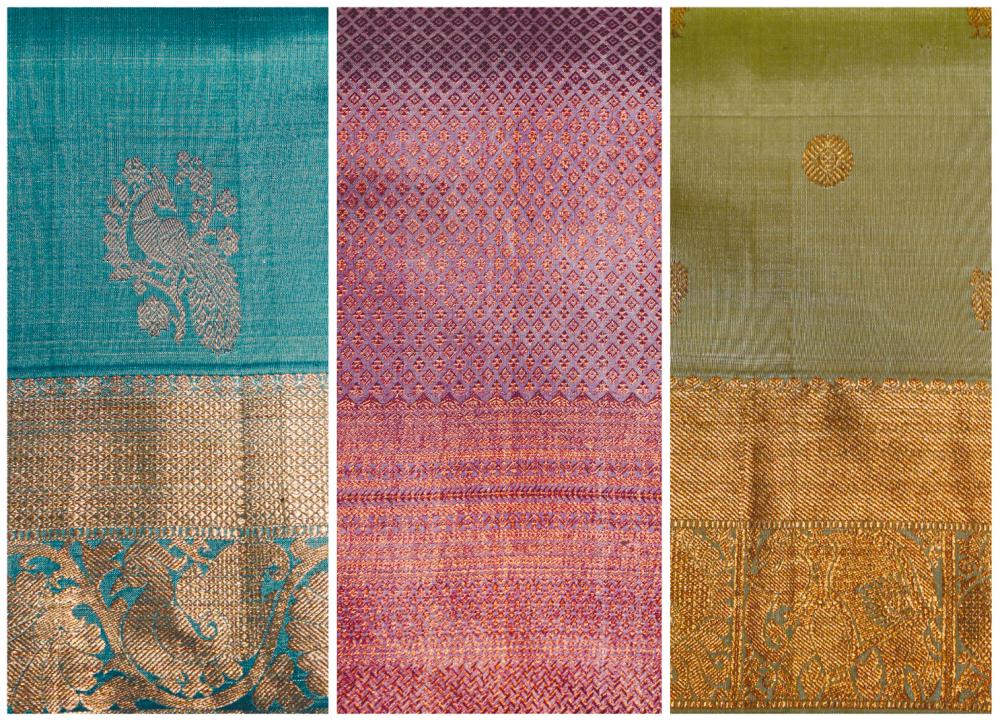
Motifs inspired by nature
In the olden days, the weavers were inspired by their environment – the beauty of nature, mythological stories, majestic ancient temples, its architecture and the carvings on the pillars in Kanchipuram city, which is known as the “City of a Thousand Temples” for its temples, 1,000 pillared halls, huge towers (gopuram), which inspired Gopuram designs – triangle silhouettes on a saree hem. Another is the Yali design, which is based on mythological creature carvings n the pillars.
Weavers are heavily influenced by the beauty of nature. For instance, the mango fruit, which grows abundantly in India, inspired a dazzling mango motif while birds like peacocks and parrots also inspired charming motifs.
Perhaps the most exquisite design is the Vanasingaram (heavenly forest), which is a beautiful ensemble of flora and fauna in an elegant and graceful pattern.



